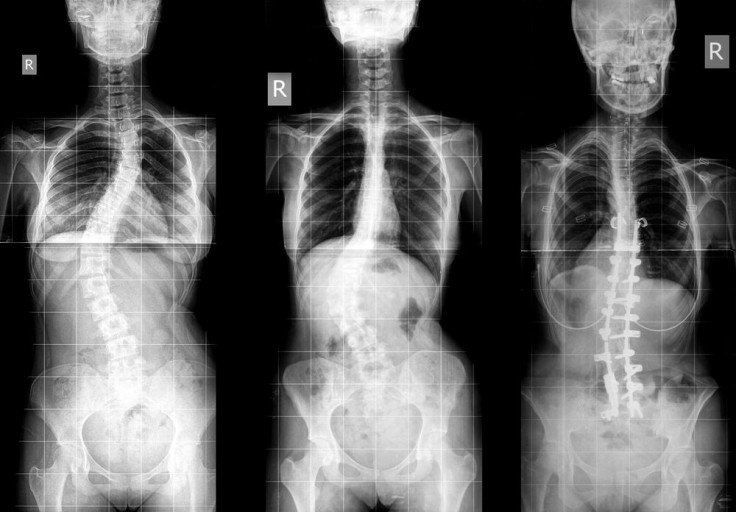Scoliosis In Families Stems From One Gene Variation; Many More May Be On The Way

While many genes have been implicated in causing scoliosis, a genetic link between familial cases of the condition has been harder to pin down. Now scientists from the University of Montreal say they have pinpointed the exact gene responsible — the POC5 gene. The team has published their findings in the Journal of Clinical Investigation.
Scoliosis affects upward of seven million people in the U.S., according to the American Chiropractic Association (ACA). Despite its widespread incidence, science hasn’t been able to establish a cause for more than 80 percent of scoliosis cases, otherwise known as idiopathic scoliosis. The remaining 20 percent stem from a mix of neurological dysfunction, tumors, or trauma.
The POC5 gene discovery holds long-term potential, says co-author Dr. Pierre Drapeau, professor and director of the Department of Pathology and Cell Biology at the University of Montreal. “This crucial first step will open the door to future studies that will identify the complementary genes and pathways that play a role in scoliosis in other populations,” Drapeau said in a statement.
He and a team of colleagues looked a population of zebrafish to collect their data, as the animal can offer a reasonable genetic model, and, unlike other models — like worms — zebrafish have spines. Through genetic testing they found a mutation in the POC5 gene, which encodes for a protein in control of microtubule organization. The mutation produced a rotational deformation in roughly half the fish, which mirrored scoliosis in humans.
Their tests revealed more complexity than previously thought. It now seems to be the case that idiopathic scoliosis finds its root in the brain, given the protein’s strong expression among particular midbrain structures. “This is a very heterogeneous disease and probably more than one gene is required for disease expression,” co-lead author Dr. Florina Moldovan said. “This discovery has enabled the identification of the first causative gene and represents an important step towards decoding its genetic causes.”
Scoliosis is defined by the ACA as a curvature of the spine no less than 10 degrees off-center. Typically it crops up in children between the ages of 10 and 15, and mostly in girls. Familial scoliosis is slightly different. As part of their study, Moldovan and her team tracked the members of a large French family, many of whom suffered from idiopathic scoliosis. Both non-relatives and members of the family expressed different variations of the POC5 gene, further lending to its complexity, said co-author Dr. Patrick Edery, of CHU de Lyon hospital.
Drapeau echoed Edery’s sentiments. While the overall picture of what causes scoliosis may not be totally solved, researchers seem to be getting a better sense of which questions to ask. “In particular,” Drapeau said, “a full portrait of genetic events would enable the perfecting of effective preventative methods and strategies for understanding scoliosis.”
Source: Moldovan F, Edery P, Drapeau P, Patten K. Functional variants of POC5 identified in patients with idiopathic scoliosis. The Journal of Clinical Investigation. 2015.



























